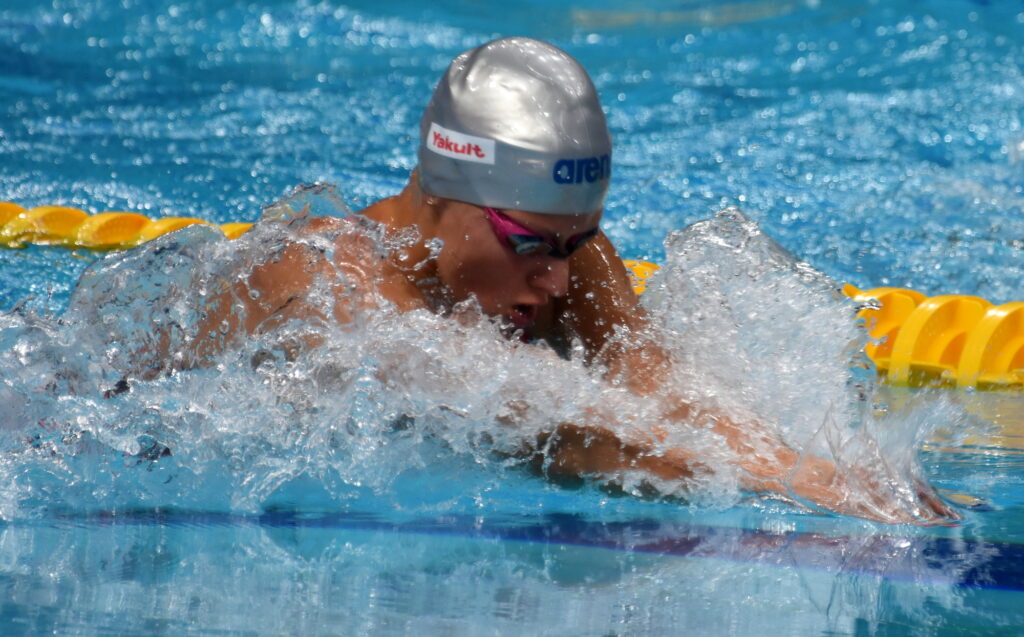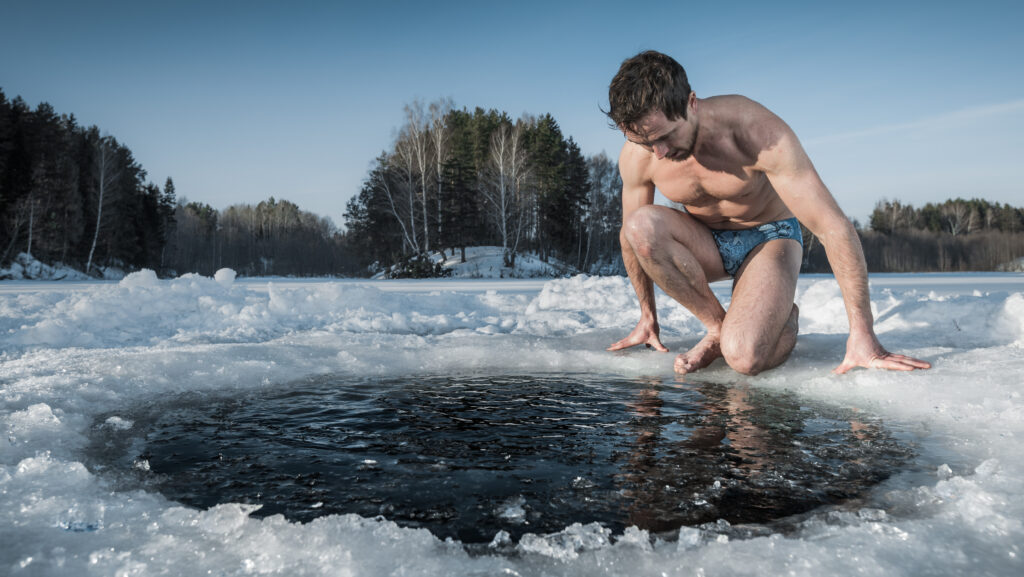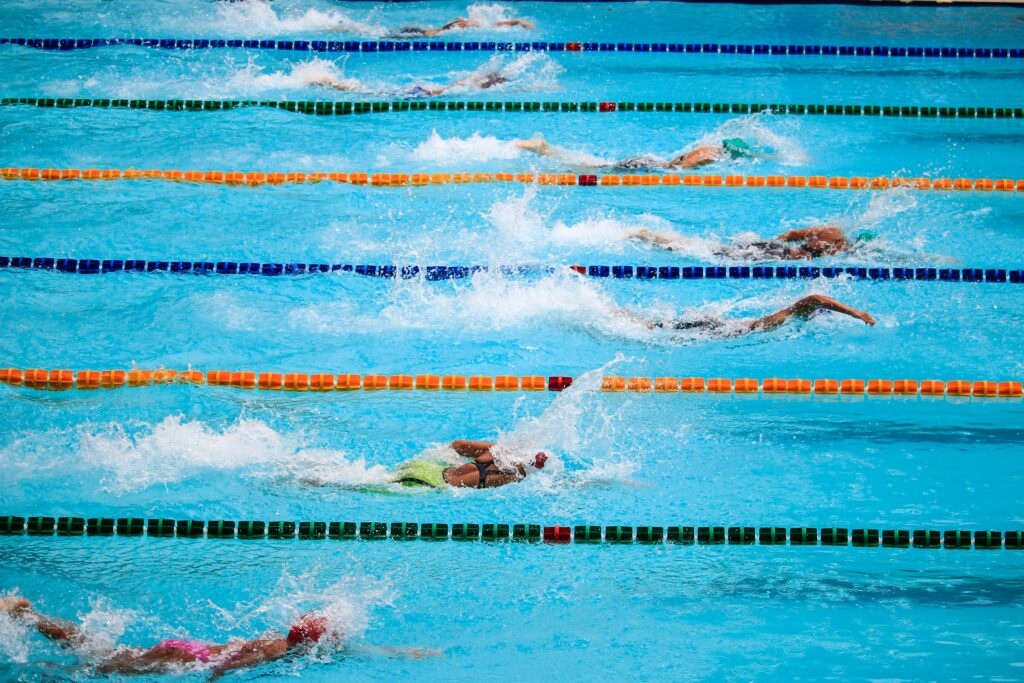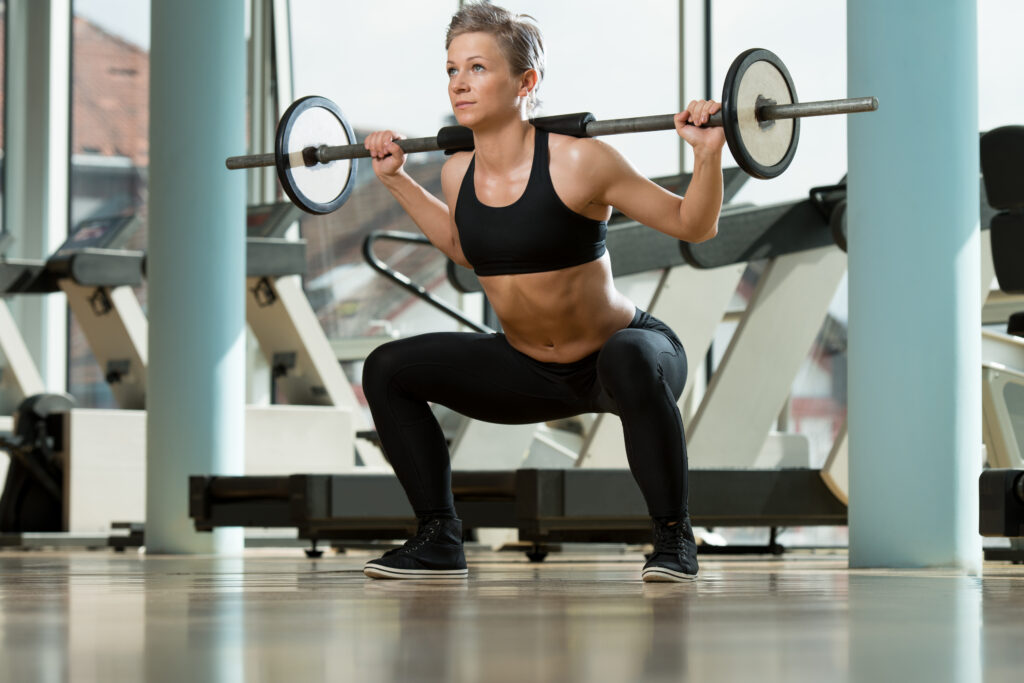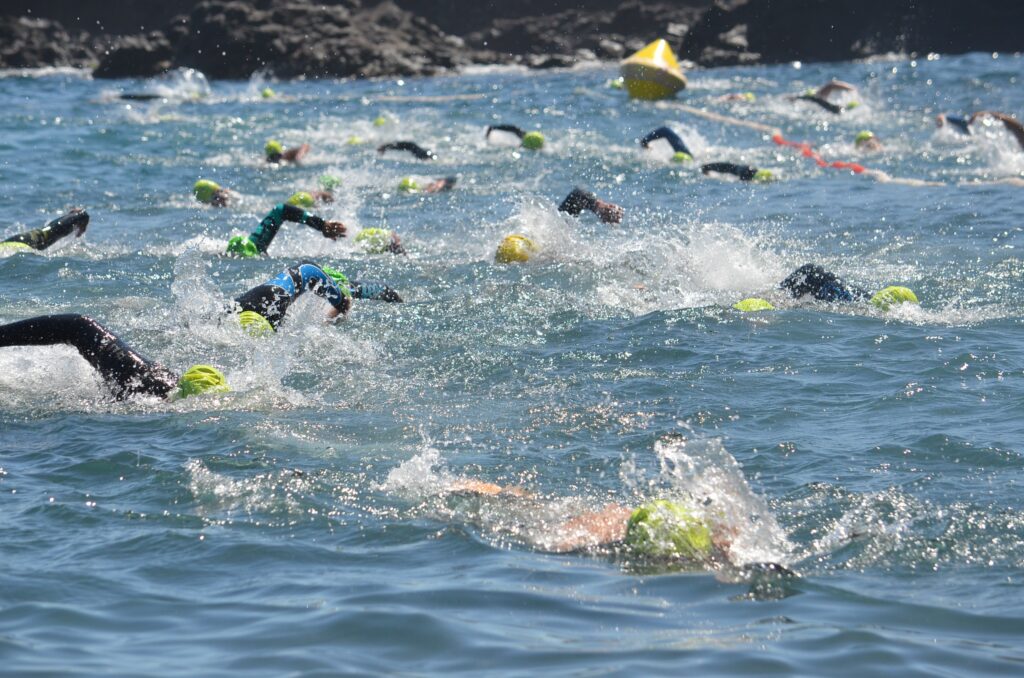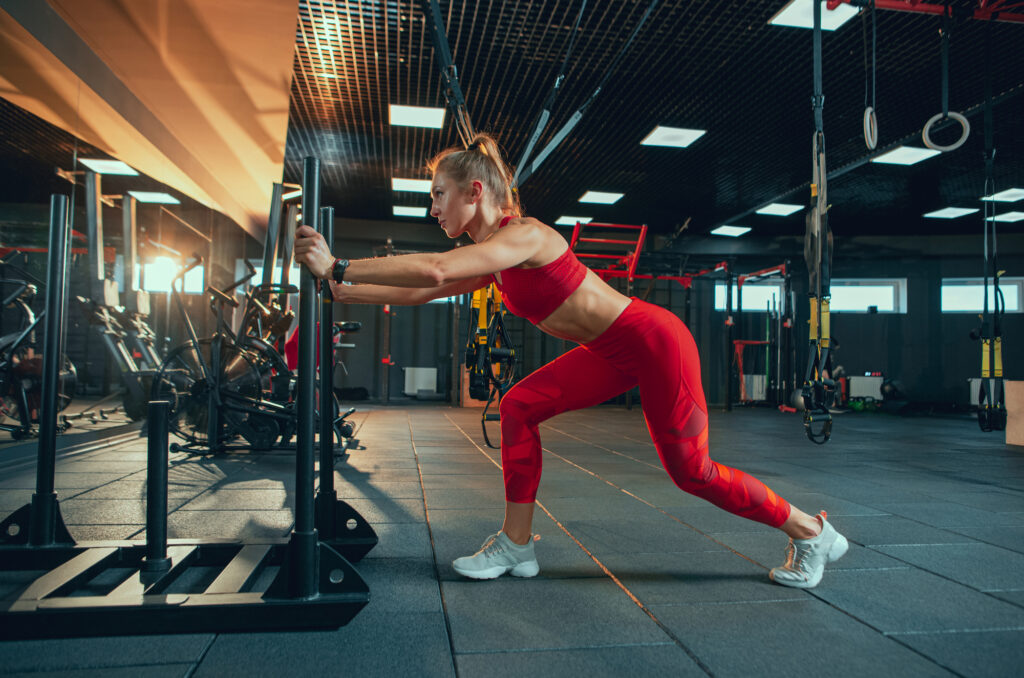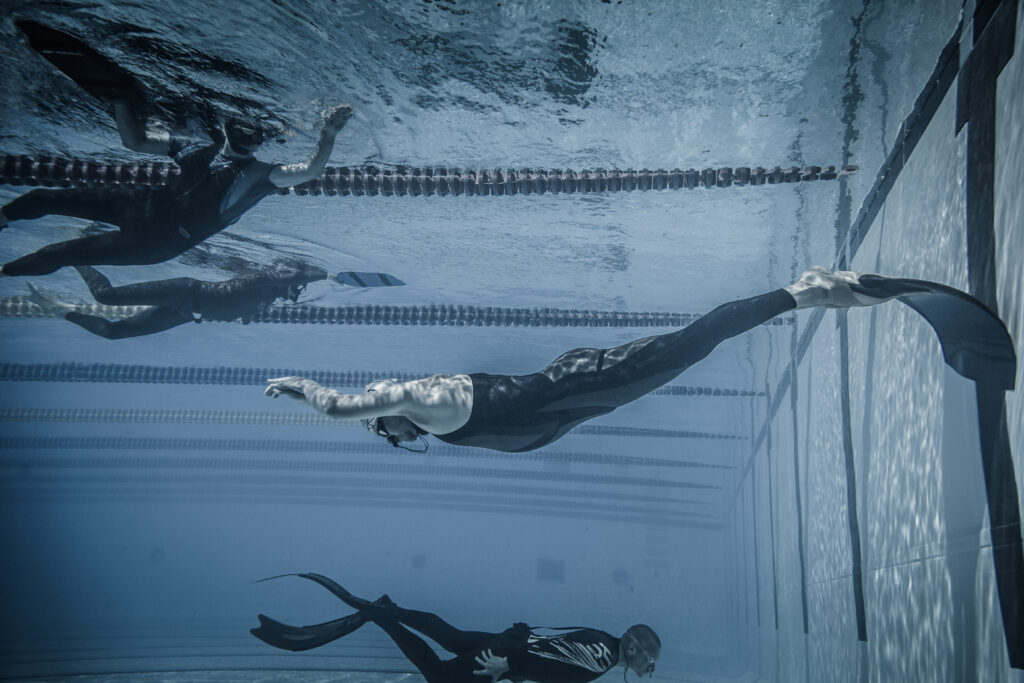To excel in the breaststroke, swimmers must focus on conditioning a specific set of muscles, all vital for power and efficiency in the water. The breaststroke demands a unique combination of strength, endurance, and coordination, which relies heavily on the symphony of muscle groups working in unison. A swimmer’s core muscles, encompassing the abdominal and obliques, play a crucial role in stabilising the body, enabling an effective, drag-minimising position that maximises propulsion.
Further critical muscle groups for a breaststroke swimmer include the latissimus dorsi and pectoralis major, which are essential for the pull phase of the stroke, as well as the biceps and triceps that contribute to the arm movements. The correct movement of the arms is fundamental to maintaining momentum and ensuring each stroke is as powerful as the last. Additionally, the lower body muscles, notably the quadriceps, hamstrings, calf muscles, and even the feet, are engaged during the whip-like kicking movement characteristic of the breaststroke.
A swimmer must also consider the erector spinae, which supports the spine, aiding in the maintenance of a streamlined posture throughout the stroke. Strengthening the backbone of the swimmer’s form, these muscles help reduce resistance and contribute to a swimmer’s endurance over long distances or extended training sessions. By focusing on enhancing these muscle groups, a breaststroke swimmer can aim for improved performance, better speed, and a reduced risk of injury.
Fundamentals of Breaststroke Technique
The breaststroke demands synchronisation of movements and precise technique to maximise efficiency and speed in the water. Understanding the mechanics of each aspect of the stroke is crucial for improvement.
Body Position and Streamline
A swimmer’s body position acts as the foundation for a smooth breaststroke. They must maintain a horizontal alignment to minimise drag, with a slight body incline allowing the legs to perform effective kicks underwater. The streamline position is essential during the glide phase, where the swimmer extends their arms in front and legs behind, reducing resistance through the water.
Breaststroke Kick and Leg Technique
The breaststroke kick, or frog kick, requires simultaneous, symmetrical leg motions. Swimmers initiate the kick with their feet turned outwards during the propulsive phase, then snap their legs together to create a streamlined position. The power of the kick comes from the inner thighs and gluteal muscles, and timing is vital to ensure it complements the arm movements.
Arm Movements and Catch
Arm technique in breaststroke involves performing a catching motion with the hands to pull water and propel the body forward. Swimmers start with hands extended, then press out and down in a circular motion, ensuring the hands remain within their line of vision to optimise the pull phase. Precise hand movements contribute significantly to the stroke’s propulsion.
Breathing and Timing
Correct breathing and timing are imperative for the efficiency of breaststroke. Swimmers should take a breath every stroke by lifting their head just above the surface while their arms pull. It’s crucial that they exhale underwater to maintain a rhythmic breathing pattern. The breath must be synchronised with the pulls and kicks, streamlining the body after each breath to maintain momentum.
Muscle Groups for Optimal Performance
To enhance breaststroke performance, swimmers should focus on strengthening specific muscle groups. Targeting these muscles improves efficiency in the water, contributing to better propulsion and balance.
Core and Abdominal Muscles
The core comprises the abdominal muscles and obliques. They provide stability, which is crucial for maintaining an effective and hydrodynamic position in the water. Engaging the core muscles throughout the stroke aids in maximising forward momentum and reducing drag.
Upper Body Musculature
Strong upper body muscles, including the pectoralis major, latissimus dorsi, biceps, and triceps, are essential for a forceful arm pull in breaststroke. Muscle engagement in the arms contributes significantly to the stroke’s propulsion phase, with the pectoral and latissimus dorsi muscles playing a vital role in the arm’s sweeping movement.
Lower Body Strength and Kicking Power
For the leg phase of breaststroke, lower body strength is vital, specifically in the glutes, hamstrings, quadriceps, and hip muscles. These muscle groups work in a coordinated sequence to perform a powerful whip kick. The calves also engage during the final stage of the kick, adding an extra thrust.
Enhancing Propulsion and Efficiency
To boost performance in the breaststroke, swimmers must focus on maximising propulsion and enhancing efficiency. This involves honing the glide phase, reducing drag with proper technique, and coordinating the pull and kick for optimal power.
Mastering the Glide Phase
The glide phase is central to the breaststroke as it allows the swimmer to take advantage of the forward momentum. Since the body is fully extended and streamlined, maintaining a strong core and engaging the hip muscles is vital for a prolonged glide. Swimmers should practice extending their arms fully and executing precise hip thrusts to transition smoothly into the propulsive phase.
Reducing Drag Through Technique
Technique adjustments can significantly reduce drag, leading to greater efficiency in the water. Swimmers should focus on keeping their head down and aligning it with their spine during the recovery phase to minimise resistance. The hands should be pitched inward to cut through the water cleanly, and the elbows should remain close to the body to maintain a streamlined form.
Optimising Pull and Kick Coordination
Propulsion in breaststroke is greatly enhanced when the arm pull and leg kick are perfectly synchronised. Swimmers should ensure that the power phase of the pull and kick generates maximum thrust, with the arms sweeping outwards and the legs executing a powerful whip-like motion. As they transition to the recovery phase, they must be cautious to recover quickly and initiate the next stroke cycle without creating additional drag.
By focusing on these specific areas, swimmers can achieve a more efficient and powerful breaststroke, leading to improved times and overall performance.
Drills and Dryland Training
To improve at breaststroke, swimmers should focus on targeted swimming drills and supplement with dryland training that develops necessary muscle groups. Flexibility and mobility work are also crucial components for peak performance.
Swimming Drills for Breaststroke
Swimming drills specifically for breaststroke focus on timing, technique, and strengthening the stroke’s unique movement patterns. One effective drill is the “[glide drill](https://www.eatsleepswimcoach.com/dryland-training-breaststroke/)”, where swimmers concentrate on the gliding phase after each stroke, enhancing propulsion efficiency. Another drill, the “[pull-down drill](https://swimswam.com/dryland-workouts-for-swimmers/)”, works on the underwater phase, strengthening the arms and chest muscles critical for a strong pull.
Supplementary Dryland Exercises
Dryland training complements in-pool work by building strength and power in muscles essential for breaststroke. Swimmers should incorporate exercises like squats, lunges, and calf raises to build lower body strength, directly translating to a powerful kick. Upper body exercises, including dips, push-ups, and bicep curls, enhance arm and chest strength for a forceful stroke. Swimmers should not overlook the core; exercises like planks and the Russian twist provide the stability and core power necessary for a cohesive stroke.
Incorporating Flexibility and Mobility Work
Flexibility and mobility are vital for efficient strokes and injury prevention. Stretching routines should focus on the hips, shoulders, and ankles, which are key joints in breaststroke mechanics. Swimmers can improve their range of motion and muscle balance, reducing the risk of injuries related to muscle tightness or imbalance. Regular mobility exercises, such as dynamic stretches before a workout and static stretches afterward, maintain and enhance movement fluidity.
Advanced Strategies for Competitive Swimmers
To excel in competitive swimming, particularly in breaststroke, athletes must refine their technical skills, master nuanced strategies, and understand the interplay between muscle work and stroke mechanics.
Analysing Stroke Rate and Cadence
Analyzing an athlete’s stroke rate and cadence is crucial for optimizing performance in breaststroke. Stroke rate refers to the number of strokes taken per minute, while cadence involves the rhythm of the stroke cycle. Competitive swimmers should aim for a balance that maximises propulsion while conserving energy. Regular video analysis helps to identify the optimal stroke rate for each swimmer, and targeted breaststroke workouts can be devised to enhance muscle memory and improve overall cadence.
Transition and Turning Techniques
Proficiency in transition and turning is a game-changer in competitive breaststroke. Swimmers must focus on the efficiency of both long-axis and short-axis turns to minimise time spent during transitions. They can achieve this through drills that emphasise quick, explosive movements and tight tucks, as well as precise underwater phases. Elite swimmers practice turns repeatedly to ensure they are executed with the least possible resistance and the highest speed gain.
Implementing Race Strategies and Pacing
When it comes to implementing race strategies and pacing, swimmers should have a clear plan for each segment of the race. Pacing in breaststroke requires a delicate balance between maintaining speed and conserving energy for a powerful finish. Swimmers may incorporate varying sessions focusing on endurance and speed/power work into their training regimen. It is essential for them to understand their individual strengths and weaknesses, enabling strategic energy distribution throughout the race for optimal performance.
Frequently Asked Questions
This section addresses common inquiries about muscle groups and training techniques pertinent to enhancing breaststroke performance in swimming.
Which muscle groups are essential for enhancing breaststroke performance?
The essential muscle groups for improving breaststroke include the latissimus dorsi, pectoralis major, leg muscles such as the quadriceps and hamstrings, as well as core muscles like the abdominals and obliques for stabilisation and efficient movement in the water.
What are effective ways to strengthen muscles for breaststroke swimming?
Incorporating exercises such as pull-ups, push-ups, and chest presses can bolster the upper body, while squats and leg curls enhance leg strength. Swimmers can also benefit from core workouts, like planks and Russian twists, to ensure a strong and stable core.
Can breaststroke swimming contribute to muscle development?
Yes, swimming breaststroke can from the muscle groups throughout the body. The repetitive motion of the stroke, especially during the leg kick and arm pull, can contribute to muscle strengthening and growth.
What are the primary muscles engaged during the breaststroke?
The primary muscles engaged during the breaststroke are the pectoralis major, latissimus dorsi, biceps, triceps, and the core muscles, including the abdominals and erector spinae. The leg muscles, including the quadriceps, hamstrings, and calf muscles, are also significantly utilised.
How may one increase their power during the breaststroke swim?
Increasing power in the breaststroke can be achieved by building muscle endurance and strength through dry land training, focusing on exercises that target the chest, shoulders, and leg muscles pivotal for the powerful kick and arm movements. Swimming with paddles and fins can also provide resistance that may help build strength.
What are the differences in muscle usage between breaststroke and backstroke?
Breaststroke primarily uses the chest, arms, and leg muscles in a symmetrical and simultaneous movement pattern, while backstroke heavily relies on the shoulders, back muscles, and hip flexors in an alternating motion. The muscle activation is different due to the varying demands of body positioning and propulsion in each stroke.

